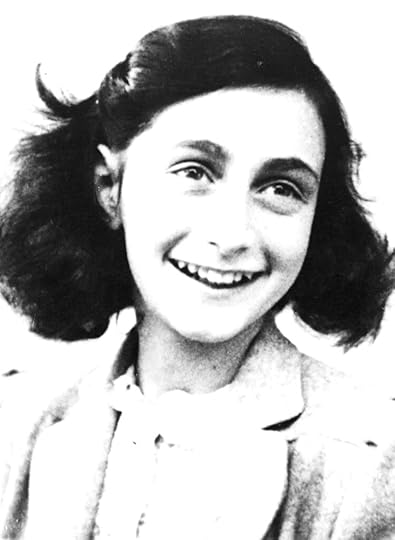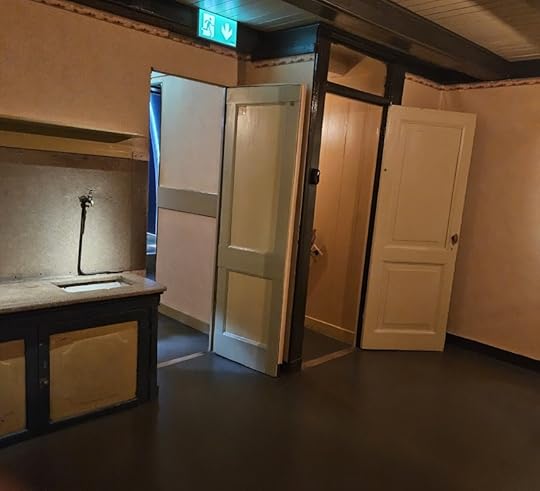The Anne Frank Attraction
I

It is not easy to get into the Anne Frank House in Amsterdam.
Tickets are limited. A new batch becomes available every few weeks at 10 a.m., Amsterdam time. We got up at six a.m. to secure ours. They were gone in two hours.
The musings and recollections of a teenaged girl about life in the place where she and her parents hid from the Nazis during the worst days of the Holocaust, has continued to attract and fascinate the world for more than eighty years. The Diary of a Young Girl has been published in seventy-five languages and sold over thirty million copies since its publication in 1949.
The space that Anne referred to as the secret annex, was located in the back of a storage warehouse operated by Otto Frank, Anne’s German-born Jewish father. It has been transformed into a museum built around the original two floors where eight people were crammed together: Otto and his wife, Anne and her older sister, Margot. They were joined by the van Pels and their son, Peter. The eighth occupant was a dentist named Fritz Pfeffer, a curious addition since the others hardly knew him.
With help from friends and Otto’s employees, the group hid together for two years from 1942, when the Nazis started rounding up Jews, to 1944 when the family was discovered and sent off to Auschwitz.
During that time, Anne, who had a burning desire to become a writer, kept herself sane filling pages with her tiny handwriting, often critically detailing the daily frustrations, irritations, and arguments of eight people surviving together in constant fear.
Today, the visitor squeezes through the entranceway that was hidden from view by a specially built bookshelf and crawls up the steep, narrow staircase into the living quarters (the photo below shows the common room where the group gathered).
There is an eerie sensation as you pause in the hiding place where Anne wrote the diary that has resulted in millions of book sales, plays, and at least thirty film and television productions, including a major Hollywood movie directed by George Stevens in 1959.
These tiny rooms, lit dimly, preserved much as they were in 1944, are real enough. At the same time you have difficulty shaking off the surreal reality of a modern tourist attraction where you are pushed and pummeled by visitors all anxious to have the same experience.
The modern glass structure encased around the original building does not help the atmosphere, nor does the comfortable open-air cafeteria, and the nicely appointed Anne Frank gift shop. Here you can purchase, among other items, copies in many languages of her diary, pictures of Anne on postcards, a cardboard model of the secret annex, an Anne Frank jigsaw puzzle, and, wouldn’t you know it, an Anne Frank tote bag.
What Otto Frank would have thought of all this is anyone’s guess. He was the only member of the group who survived the death camps. Only after he was back in Amsterdam did he learn that everyone else had perished. Anne died of spotted typhus at the Bergen-Belsen Concentration Camp. She was fifteen.
A friend who had found Anne’s diary in the annex after the arrests held on to it until Otto returned. When he finally brought himself to read it, he couldn’t quite believe this was his daughter. He decided to try and get it published. After a number of false starts and rejections, Diary of a Young Girl was eventually published in 1949. International acclaim soon followed.
Otto, who died in 1980 at the age of 91, did a great deal of editing and trimming to amalgamate the two versions Anne created into a single publishable book. That has fuelled accusations that he wrote the diaries himself. It got to the point where handwriting experts were brought in to verify their authenticity. The original notebooks are on display at the museum.
Curiously, the subject of how Anne and the others were discovered by Dutch police on August 4, 1944, is not addressed in the museum (more information is available on its website). They were all arrested and sent to Auschwitz on what, ironically, was the last train carrying Jews out of Amsterdam. Viewing the artfully constructed bookcase, it is hard to imagine how Anne and her family could have been found—unless they were betrayed. Certainly, that is what Otto Frank believed.
But then who would have betrayed them? All sorts of theories and suspects have been suggested over the years, usually involving an informant calling the police, but nothing has been clearly proven.
A recent investigation by the Anne Frank House suggested an alternative: Police looking for ration-book fraud at the warehouse complex might have stumbled upon the hidden annex in the course of their investigation. Except when you look at that bookshelf, it seems unlikely the hiding place would have been discovered by accident.
Visitors in the summer of 2025 are probably unaware of the mysteries that still swirl around Anne Frank’s life and death. The more than one million people who annually visit the museum are simply drawn to the place where a young girl hid and wrote the diary that created the story that places the Holocaust into intimate tragic focus and continues to inspire generation after generation.
Hard to get into the Anne Frank House; impossible to leave, unmoved.




